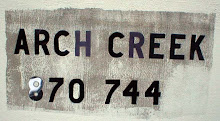Steve Soto at The Left Coaster here.
The NYT analyzes McCain's health care proposal and finds it to be a joke. If your health care proposal is based on technology and high-risk pools, instead of cost containment and actually covering the uninsured, then you aren't really interested in fixing health care and instead only want to bamboozle voters.
Yet his media friends will portray him as offering a serious proposal, even if his plan has been shown to be a fraud.
From the NYT article:
In late April, Mr. McCain, Republican of Arizona, announced that if elected president he would seek to insure people like Mr. Benamor by vastly expanding federal support for state high-risk pools like Maryland’s, or by creating a structure modeled after them. But as Mr. Benamor’s case demonstrates, even well-regarded pools have served more as a stopgap than a solution.
Though high-risk pools have existed for three decades, they cover only 207,000 people in a country with 47 million uninsured, according to the National Association of State Comprehensive Health Insurance Plans. Premiums typically are high, as much as twice the standard rate in some states, but are still not nearly enough to pay claims. That has left states to cover about 40 percent of the cost, usually through assessments on insurance premiums that are often passed on to consumers. . . .
Currently, those who buy insurance individually often face higher costs because their risks are not spread across broad groups of workers. Though insurers cannot discriminate against participants in group plans, they evaluate consumers seeking individual coverage case by case to determine if they are worth the risk of coverage, and at what price. . . .
The McCain campaign recognizes that in an invigorated individual market, even larger numbers of chronically ill people would go without the protection afforded by group coverage. High-risk pools would theoretically serve to fill the gaps.
Critics argue that, to date, insurers have benefited from the state pools as much as the uninsured. As long as premiums remain above market rates, the pools insulate commercial insurers from the greatest risks while giving customers little incentive to abandon their private policies.
“They are run in ways that protect the profitability of commercial insurers,” said Karen Pollitz, a professor at Georgetown University who has studied high-risk pools and who has served on the board of the Maryland plan. “They leave the illusion that there’s a safety net without there really being much of one.”
Mr. Obama’s plan differs from Mr. McCain’s in several ways. In addition to requiring insurers to accept all applicants, he would require that parents obtain insurance for their children. To make premiums affordable, he would create a Medicare-like government plan that would be open to all and pump up to $65 billion a year into subsidies. The money would come from repealing President Bush’s income tax cuts for those earning more than $250,000 a year. . . .
Mr. McCain’s proposal would represent a huge increase over the $50 million a year that Congress now appropriates in grants to the state pools, in a program that began in 2002. But several analysts questioned whether even $10 billion would be nearly enough, given that the states now spend about $2 billion to insure 207,000 people.
“I do not for a minute think it will cost 7 to 10 billion dollars a year,” Ms. Pollitz said. “It may cost 7 to 10 billion dollars a week.” . . .

No comments:
Post a Comment